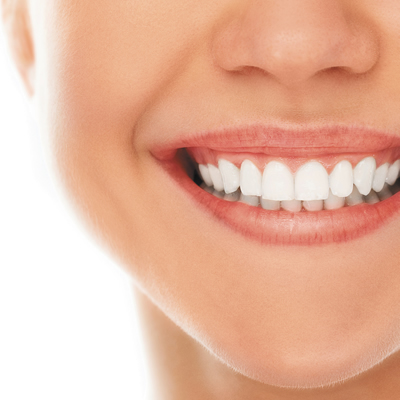Porcelain & Composite Veneers

Composite Veneers And Porcelain Veneers Are Both Beautiful And Give You A Fabulous Smile! If you’re looking for a permanent solution for chipped or discolored teeth, veneers are the best option. Do you have big spaces between your the teeth, unusually short teeth you’d like to lengthen, or have broken off the edge of your tooth? Veneers could be the perfect answer.Veneers are used in cases in which more is needed to be done to accomplish natural esthetics. Veneers can be used to address more severe misalignment, form, color and spacing issues. When accomplished properly, no one should know you had any treatment.
Both composite and porcelain veneers involve full or partial facings of teeth that can enhance the beauty of your smile. Porcelain lasts much longer, which is one of the reasons why they cost significantly more than composite.Veneers
Composite veneers can be applied in one day, last 4 to 8 years, and require maintenance. They can be susceptible to chipping if not well cared for. The cost is typically about half of a porcelain restoration. Porcelain Veneers are more durable, last 12-25 years and rarely require maintenance. Both can be used for a variety of esthetic situations and results can be amazing.
Both approaches should begin with a complete cosmetic analysis so we know your desires and needs. Esthetic dentistry is not for all dentists and involves extreme attention to detail. We have been doing veneers on our patients for over 12 years.
Composite veneers
Today’s composite materials can provide a life-like, beautiful appearance that conserves tooth structure and can last for a long time.
With composite veneers, resin is applied in layers to the tooth and sculpted directly in your mouth to achieve the desired esthetic. Composite veneers are used in situations in which there is chipping or discoloration of natural teeth. They are also used where there are minor misalignments of teeth to give teeth the appearance of more aligned teeth.
The greatest advantage of composite veneers is their reversibility; they can be removed and replaced as needed. Composite veneer therapy is an art. Ask to see some of our work and make sure you feel this is the way you should go.
Porcelain veneers
Porcelain veneer therapy involves removal of a thin fingernail thickness layer of the tooth’s enamel followed by the bonding of a thin sculpted porcelain veneer. This procedure is used when there is more severe discoloration, malformation or misalignment of teeth.
The advantages of porcelain veneers are their extreme resistance to staining and chipping as compared to composite veneers. If you love coffee or tea, porcelain veneers may be the better choice.
Choosing between composite and porcelain veneers
Strength and Longevity are the biggest difference between composite and porcelain veneers. Composite veneers are created in two ways, direct or indirect. Indirect is when impressions are taken, and a lab fabricates the materials which are then bonded in place during a second appointment. Porcelain veneers are done indirectly as well.
Direct composite veneers are installed in one visit and sculpted at the time of placement.
To summarize the characteristics of each:
Composite:
- Engineered resin or plastic
- Tends to stain more easily because of its porosity (and it absorbs water)
- Needs to be polished exceedingly well to look natural
- Can be placed more conservatively than veneers (less tooth reduction is most cases)
Porcelain veneers:
- The most beautiful restoration available in cosmetic dentistry – mimics nature the best
- Does not stain because it lacks porosity (after porcelain is glazed)
- Typically more expensive and complex procedure than doing “bonding”
- Lifespan is typically longer than bonding


